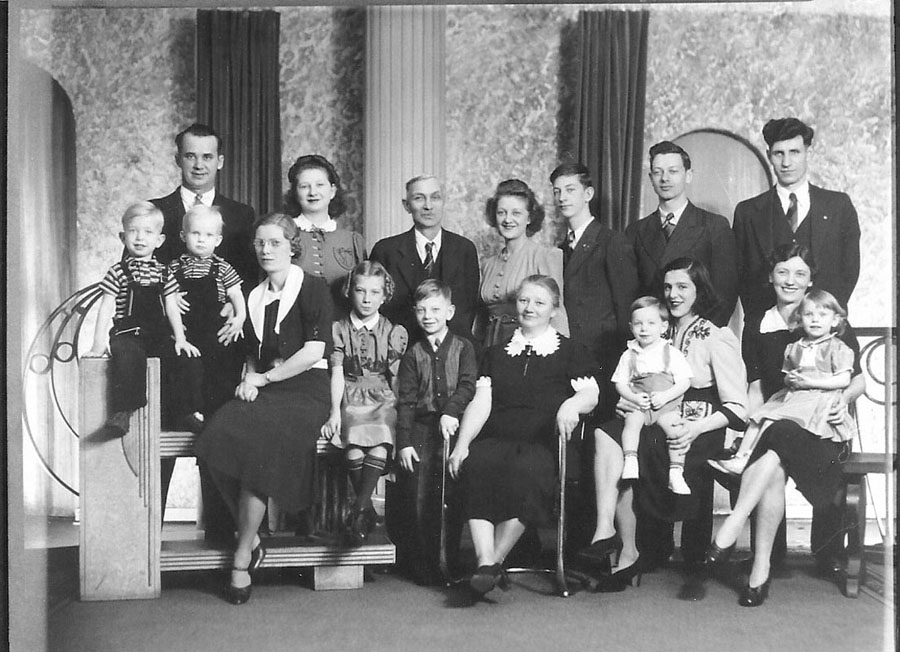THE RUSSIAN REVOLUTION
The Russian Civil War in the Ukraine Russia Ukraine
Farms, homes, personal possessions, even life itself, felt the fist of tyranny! Plagues of diseases such as Cholera and Typhus, along with starvation took their toll. Suffering became a way of life!
After the bandits were turned back, the Ukraine
It was only a short time before WWI, which started in 1914! At that time, the hatred of everything German reached new heights. Grandpa and Grandma’s parents and sister Elizabeth were still there! We don’t know what might have happened to them during this time period. Our records show that Friedrich and Elizabeth died in Russia
THEY ARRIVE
The time level that these families arrived in Canada Canada by train to Moose Jaw
How did Friedrich and Maria accommodate so many? They all arrived just before, or well into a Canadian winter!! My conclusion, (only a conclusion), is that they had help from the Mennonites! It is known that the Batke family didn’t have a history of Mennonite religion in their background, as they were Lutheran, but they did travel with, and lived among the Mennonites in Canada , and in Russia
As more settlers came to the prairies of Saskatchewan Saskatchewan
There were rules concerning the land! They were required to clear 10 acres of each quarter section per year and put it under cultivation the following year.
Mr. Henry Batke broke 23 acres of new ground in 1914, cleared 21 acres in 1915 and planted 44 acres. The house was 16x24 with 250.00 worth of lumber. The barn was 18x30 and a granary was 12x14. Henry Batke received a Land Patent dated March 30, 1918 indicating official ownership of a quarter section of land equaling 160 acres.
As there were no, or few trees, it can be assumed that they had to buy lumber to build a house, barn and granary, possibly from the Mennonites, who were well established by then. That is how they know the value of their houses. Where did they live while building their houses?
 |
| Saskatchewan Homestead Map c1915; Blue-Links; Red-Batkes |
In a sworn statement by Heinrich Krueger for Jacob Link in reference to the application for land patent, November 22, 1917, he states that Jacob was a farmer since 1913 and that he had lived on the land continuously, with his wife and 3 children since May of 1914. In 1914 he cleared 15 acres and cropped 8. In 1915 he cleared 20 acres and cropped 15. In 1916 he cleared 35 acres and planted 35. In 1917, he cleared nil, and planted 70 acres.
In 1914 Grandpa had 4 cattle, in 1915, 5 cattle and 1 hog. In 1916, he had 2 cattle, 4 horses and 2 hogs, and in 1917, he had l cow, 4 horses and 6 hogs. He also had a 14x18 frame house valued at 200.00, and 10 acres of fencing worth 35.00, a 14x20 framed barn along with a good well valued at 50.00. Our mother described this house as having 3 rooms, but they had to be very small rooms, or partitioned off in some other way than actual walls.
When clearing the land is mentioned, more than likely this did not mean clearing of big trees, as one might think. The prairie was known as the “steppe” meaning “without trees”. Katharine Batke Fredrick remembered that the “steppes” of Canada
Think about it! When they settled on their homestead, there was nothing there! No shelter, no water, nothing! They had arrived with only what they could carry, one would assume! Three of the families had small children! But they were FREE at last!
 |
| Brothers Peter, Jacob and Friedrich Link, Canada, c1913 |


No comments:
Post a Comment